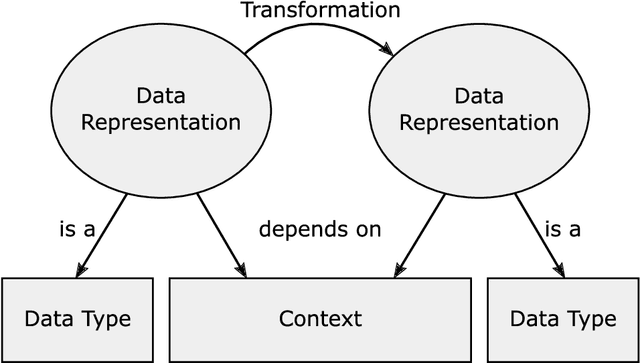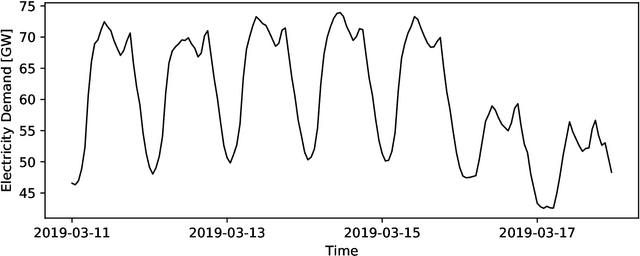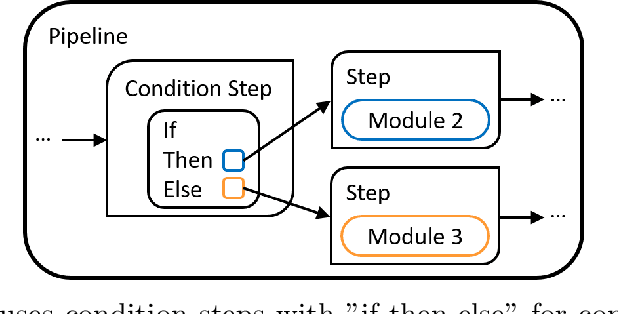Nicole Ludwig
University of Tübingen
Evaluating Weather Forecasts from a Decision Maker's Perspective
Dec 16, 2025Abstract:Standard weather forecast evaluations focus on the forecaster's perspective and on a statistical assessment comparing forecasts and observations. In practice, however, forecasts are used to make decisions, so it seems natural to take the decision-maker's perspective and quantify the value of a forecast by its ability to improve decision-making. Decision calibration provides a novel framework for evaluating forecast performance at the decision level rather than the forecast level. We evaluate decision calibration to compare Machine Learning and classical numerical weather prediction models on various weather-dependent decision tasks. We find that model performance at the forecast level does not reliably translate to performance in downstream decision-making: some performance differences only become apparent at the decision level, and model rankings can change among different decision tasks. Our results confirm that typical forecast evaluations are insufficient for selecting the optimal forecast model for a specific decision task.
Fault Detection in Solar Thermal Systems using Probabilistic Reconstructions
Nov 13, 2025Abstract:Solar thermal systems (STS) present a promising avenue for low-carbon heat generation, with a well-running system providing heat at minimal cost and carbon emissions. However, STS can exhibit faults due to improper installation, maintenance, or operation, often resulting in a substantial reduction in efficiency or even damage to the system. As monitoring at the individual level is economically prohibitive for small-scale systems, automated monitoring and fault detection should be used to address such issues. Recent advances in data-driven anomaly detection, particularly in time series analysis, offer a cost-effective solution by leveraging existing sensors to identify abnormal system states. Here, we propose a probabilistic reconstruction-based framework for anomaly detection. We evaluate our method on the publicly available PaSTS dataset of operational domestic STS, which features real-world complexities and diverse fault types. Our experiments show that reconstruction-based methods can detect faults in domestic STS both qualitatively and quantitatively, while generalizing to previously unseen systems. We also demonstrate that our model outperforms both simple and more complex deep learning baselines. Additionally, we show that heteroscedastic uncertainty estimation is essential to fault detection performance. Finally, we discuss the engineering overhead required to unlock these improvements and make a case for simple deep learning models.
Spatiotemporally Coherent Probabilistic Generation of Weather from Climate
Dec 19, 2024Abstract:Local climate information is crucial for impact assessment and decision-making, yet coarse global climate simulations cannot capture small-scale phenomena. Current statistical downscaling methods infer these phenomena as temporally decoupled spatial patches. However, to preserve physical properties, estimating spatio-temporally coherent high-resolution weather dynamics for multiple variables across long time horizons is crucial. We present a novel generative approach that uses a score-based diffusion model trained on high-resolution reanalysis data to capture the statistical properties of local weather dynamics. After training, we condition on coarse climate model data to generate weather patterns consistent with the aggregate information. As this inference task is inherently uncertain, we leverage the probabilistic nature of diffusion models and sample multiple trajectories. We evaluate our approach with high-resolution reanalysis information before applying it to the climate model downscaling task. We then demonstrate that the model generates spatially and temporally coherent weather dynamics that align with global climate output.
Towards turbine-location-aware multi-decadal wind power predictions with CMIP6
Aug 27, 2024Abstract:With the increasing amount of renewable energy in the grid, long-term wind power forecasting for multiple decades becomes more critical. In these long-term forecasts, climate data is essential as it allows us to account for climate change. Yet the resolution of climate models is often very coarse. In this paper, we show that by including turbine locations when downscaling with Gaussian Processes, we can generate valuable aggregate wind power predictions despite the low resolution of the CMIP6 climate models. This work is a first step towards multi-decadal turbine-location-aware wind power forecasting using global climate model output.
Inductive biases in deep learning models for weather prediction
Apr 06, 2023Abstract:Deep learning has recently gained immense popularity in the Earth sciences as it enables us to formulate purely data-driven models of complex Earth system processes. Deep learning-based weather prediction (DLWP) models have made significant progress in the last few years, achieving forecast skills comparable to established numerical weather prediction (NWP) models with comparatively lesser computational costs. In order to train accurate, reliable, and tractable DLWP models with several millions of parameters, the model design needs to incorporate suitable inductive biases that encode structural assumptions about the data and modelled processes. When chosen appropriately, these biases enable faster learning and better generalisation to unseen data. Although inductive biases play a crucial role in successful DLWP models, they are often not stated explicitly and how they contribute to model performance remains unclear. Here, we review and analyse the inductive biases of six state-of-the-art DLWP models, involving a deeper look at five key design elements: input data, forecasting objective, loss components, layered design of the deep learning architectures, and optimisation methods. We show how the design choices made in each of the five design elements relate to structural assumptions. Given recent developments in the broader DL community, we anticipate that the future of DLWP will likely see a wider use of foundation models -- large models pre-trained on big databases with self-supervised learning -- combined with explicit physics-informed inductive biases that allow the models to provide competitive forecasts even at the more challenging subseasonal-to-seasonal scales.
A Collection and Categorization of Open-Source Wind and Wind Power Datasets
Feb 17, 2022



Abstract:Wind power and other forms of renewable energy sources play an ever more important role in the energy supply of today's power grids. Forecasting renewable energy sources has therefore become essential in balancing the power grid. While a lot of focus is placed on new forecasting methods, little attention is given on how to compare, reproduce and transfer the methods to other use cases and data. One reason for this lack of attention is the limited availability of open-source datasets, as many currently used datasets are non-disclosed and make reproducibility of research impossible. This unavailability of open-source datasets is especially prevalent in commercially interesting fields such as wind power forecasting. However, with this paper we want to enable researchers to compare their methods on publicly available datasets by providing the, to our knowledge, largest up-to-date overview of existing open-source wind power datasets, and a categorization into different groups of datasets that can be used for wind power forecasting. We show that there are publicly available datasets sufficient for wind power forecasting tasks and discuss the different data groups properties to enable researchers to choose appropriate open-source datasets and compare their methods on them.
Smart Data Representations: Impact on the Accuracy of Deep Neural Networks
Nov 17, 2021



Abstract:Deep Neural Networks are able to solve many complex tasks with less engineering effort and better performance. However, these networks often use data for training and evaluation without investigating its representation, i.e.~the form of the used data. In the present paper, we analyze the impact of data representations on the performance of Deep Neural Networks using energy time series forecasting. Based on an overview of exemplary data representations, we select four exemplary data representations and evaluate them using two different Deep Neural Network architectures and three forecasting horizons on real-world energy time series. The results show that, depending on the forecast horizon, the same data representations can have a positive or negative impact on the accuracy of Deep Neural Networks.
pyWATTS: Python Workflow Automation Tool for Time Series
Jun 18, 2021



Abstract:Time series data are fundamental for a variety of applications, ranging from financial markets to energy systems. Due to their importance, the number and complexity of tools and methods used for time series analysis is constantly increasing. However, due to unclear APIs and a lack of documentation, researchers struggle to integrate them into their research projects and replicate results. Additionally, in time series analysis there exist many repetitive tasks, which are often re-implemented for each project, unnecessarily costing time. To solve these problems we present \texttt{pyWATTS}, an open-source Python-based package that is a non-sequential workflow automation tool for the analysis of time series data. pyWATTS includes modules with clearly defined interfaces to enable seamless integration of new or existing methods, subpipelining to easily reproduce repetitive tasks, load and save functionality to simply replicate results, and native support for key Python machine learning libraries such as scikit-learn, PyTorch, and Keras.
 Add to Chrome
Add to Chrome Add to Firefox
Add to Firefox Add to Edge
Add to Edge